Part II: Revisiting the "Virgin" Site of Swedish Tavern, page 63
Can We Apply the Science of Dowsing to Find Coins?
With my next find, I noticed that each new coin I was digging up would be smaller in size than the previous one. This small copper coin was only 13mm in diameter.
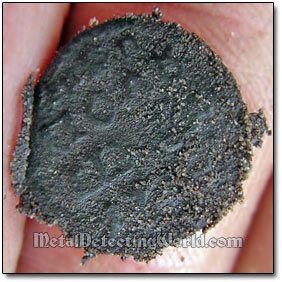
As I was detecting with minimum Discrimination (only nails were rejected), such a tiny coin caused a good solid signal.
Russian 1719 Polushka, Peter I The Great, after Cleaning
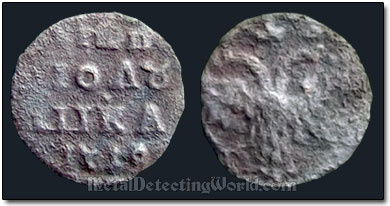
...I was wondering what technique could be used to bring back and develop the human's ability to sense and locate whatever object is reasonably desired in the ground? Could it be done through meditation (I know little about it) as one friend of mine claims. He also claims that he can do a lot with a pendulum while dowsing maps and all that stuff.
There is more to that: his brother "can locate a coin in the field by using the dowsing L-rods!" Then why did he buy the E-Trac? Well, I have not seen any results with either, but I will certainly let you know when I witness his remarkable results of using the L-rods for finding a silver coin in the field...
For now, I got my own remarkable result - I dug up a silver coin!!! For now, E-Trac kept its superiority over the dowsing rods.
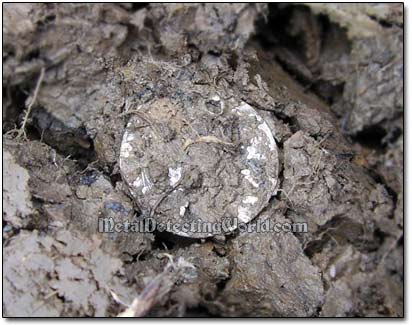
Very carefully I extracted my coin find from sticky loam (I was hunting in the low-elevated wet spot) and brushed some of it off my coin. Seeing numbers 16 and 2 made me feel really good.
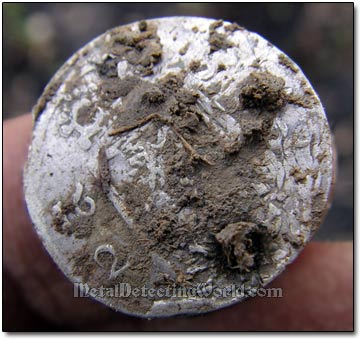
Just as I thought, I had recovered the 17th century silver coin. Too bad it had two holes (someone did not want to lose such a sentimental piece and secured the coin to his/her coat or hat with two stitches!). But even with holes, this coin could still buy me one gallon of milk in 1665. That would be nice!
Silver 1665 2 Öre, Swedish King Carl XI
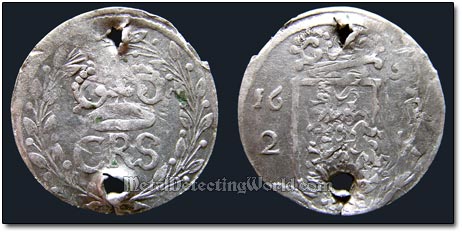
OBVERSE: Crown above CRS (Carl Regis Svecia) monogram, wreath around
REVERSE: Reval coat of arms (three leopards) in crowned shield dividing date 16-65 and value 2-R
Weight: 1.76g
Diameter: 21-22.5mm
Silver Content: 0.444
Mint: Reval (modern city of Tallinn)